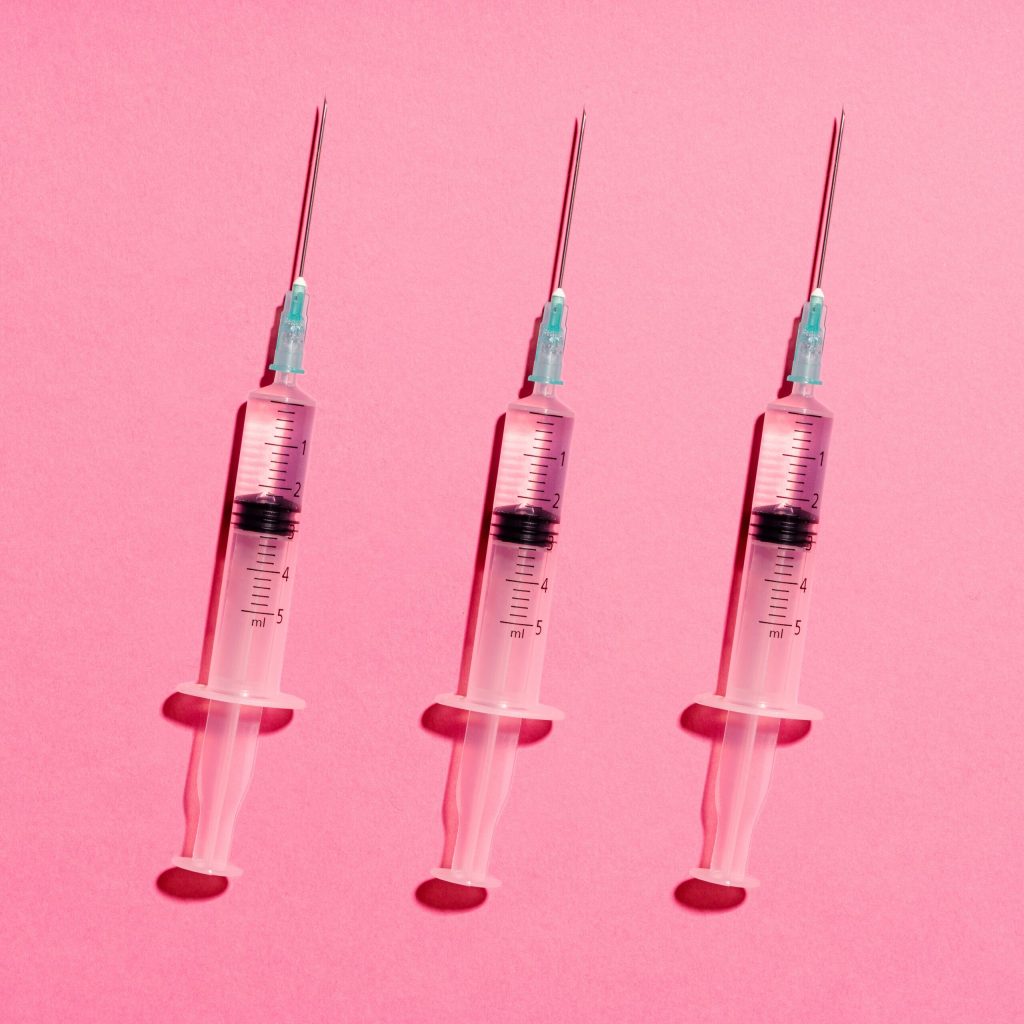Meet Skinvive, the new FDA-approved dermal filler in town. The low-molecular weight, hyaluronic-acid gel is thinner in texture than traditional fillers and has been FDA-approved to smooth the cheek skin in individuals aged 21 and older. Double-board-certified plastics surgeon Ben Talei, MD, describes it as a “hydratory” filler, noting that it is used “to hydrate the layers under the skin” and helps with things such as crepiness, irregularities in texture, and overall glow.
Though the treatment is new to the US, this class of diffuse filler has been approved in Europe since 2015, where it was popularized by the product Profilho. “The FDA is very meticulous in their process,” board-certified plastic surgeon Cat Chang, MD, tells POPSUGAR. (She adds that most popular cosmetic procedures are approved in Europe first before making its way stateside.) “It has been a missing tool we needed, and that we now have access to, that Europe has had for years.”
Here, we dive into everything you need to know about the new filler, including how it works and what it can do for your skin.
How Is Skinvive Different From Traditional Filler?
The main difference between the two is that traditional filler is used to add volume, while Skinvive is intended to add hydration, says Dr. Chang. “Skinvive has a low G prime, so it hydrates the skin to improve texture but does not yield volume.”
Formulation-wise, the primary differences between fillers comes down to their molecular weight and viscosity. Higher molecular weight hyaluronic-acid molecules attract more water and create denser volume to mimic bone; conversely, hyaluronic-acid molecules with a lower molecular weight have the same hydrophilic effect, just more subtly. Depending on where a filler falls on this spectrum impacts the ways and areas that they are used to create volume, light reflection, and contours on the face.
Low molecular weight fillers like Skinvive and Profilho are much thinner and more diffuse than their counterparts. While they can improve texture, they are not used to build volume.
Who Can Benefit From Skinvive?
Dr. Chang points out that this type of filler is a great option for patients that have crepiness, thin skin, fine lines, or textural irregularities. Its FDA-approval is for the cheek area, but it can also be helpful for areas that crinkle around the lip, the neck, arms, thighs, or hands. Dr. Talei says that this filler is injected into the hypodermous, an area of the skin where you have hypodermal fat and a hydrating layer called the SMAS, a thin layer of strong connective tissue on the face that loosens and descends as we age.
“Skinvive is good for people that start to get darkening of the skin with age [due to] a loss of fat or dehydration under the skin,” says Dr. Talei. “When this happens, your skin reflects light poorly and does not look as bright or radiant anymore.”
To remedy this, aesthetic experts might recommend injections of nanofat (meaning fat that has been purified down to the cellular level), injections of platelet-rich plasma (PRP) or platelet-rich fibrin (PRF) under the skin, or even fat grafting. “Alternatively, you can [now] add thin threads of this filler under the skin, and it draws in water, enhances brightness, and keeps the skin more plump.”
A Better Option For “Ozempic Face”?
The loss of facial fat naturally occurs as part of the aging process. But there is another interesting trend in Hollywood resulting in rapid weight loss these days. The popularity of using GLP-1 agonists like Ozempic and semaglutide for weight loss has been notorious for a resulting gauntness of the face, which has cheekily been coined “Ozempic face.”
As Dr. Talei points out, rapid weight loss also causes dehydration to occur underneath the skin – shrinking the SMAS and resulting in the very phenomenon described above. So, can Skinvive be used to treat Ozempic face?
“It is probably one of the better options if someone has ‘Ozempic face,’ or to address other changes they are experiencing from rapid weight loss,” Dr. Talei says. He points out that it is not a good idea to get filler or fat grafting when it is unknown whether or not the weight will stay stable. “But [a low molecular weight filler like Skinvive] would help with gauntness and light reflection.”
How to Use Skinvive
Allergan, the parent company of Skinvive, claims that the filler will last six months, essentially meaning you can plan to head into the office twice per year. “Every six months, you can check to see if it needs a touch up, but most likely it is going to end up being something injected closer to once per year,” Dr. Talei says. He adds that it can be dissolved, but that as a class, it is actually less likely to cause irregularities or complications than traditional filler.
“I am not worried about any safety concerns, but what will be a learning process is understanding how many treatments, how long does it last, etc.,” Dr. Chang says, noting that its newness makes it hard to make overarching predictions about practice outcomes. However, experts like Dr. Chang and Dr. Talei are very excited for this newcomer to their aesthetics arsenals.

